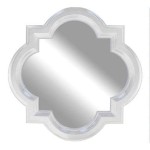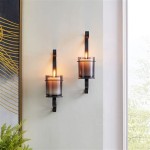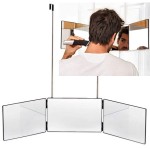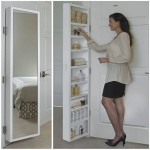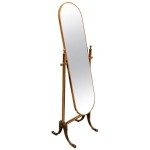Mirror in AutoCAD 2010
The Mirror command in AutoCAD 2010 provides a powerful way to create symmetrical objects or reflected copies of existing geometry. This functionality is essential for various design tasks, from creating symmetrical building layouts to mirroring mechanical parts. Understanding the intricacies of the Mirror command can significantly improve drawing efficiency and accuracy.
Accessing the Mirror Command
Users can access the Mirror command in several ways within AutoCAD 2010: *
Ribbon:
Locate the Mirror command within the "Home" tab of the drawing ribbon panel, under the "Modify" panel. *Toolbar:
The "Modify" toolbar provides a readily accessible Mirror button. *Command Line:
Typing "MIRROR" or "MI" in the command line and pressing Enter will initiate the command. *Menu:
Navigating through the "Modify" menu and selecting "Mirror" offers another access point.Selecting Objects for Mirroring
Once the command is activated, AutoCAD prompts the user to select the objects to be mirrored. Multiple objects can be selected by: *
Window Selection:
Dragging a window around the desired objects will select everything enclosed within. *Crossing Selection:
Dragging a crossing window selects objects that are even partially within the selection window. *Individual Selection:
Clicking each object individually allows for precise control over the selection process.Specifying the Mirror Line
The next crucial step involves defining the mirror line. This line acts as the axis of symmetry, determining the position and orientation of the mirrored objects. The user specifies two points to define this line. The direction of the line doesn't affect the final result. *
Object Snap:
Utilizing object snap points, like endpoints, midpoints, or intersections, ensures precise placement of the mirror line. *Coordinates:
Inputting specific coordinate values offers precise control over the mirror line's location.Deleting Source Objects
After defining the mirror line, AutoCAD prompts the user to decide whether to delete the original objects or retain them. This option offers flexibility depending on the design requirements. *
"Yes":
Deletes the source objects after the mirror operation is complete, leaving only the mirrored copy. *"No":
Keeps the source objects and creates a mirrored copy, resulting in a symmetrical arrangement.Mirroring About Non-Orthogonal Lines
The Mirror command is not restricted to mirroring about horizontal or vertical axes. Objects can be mirrored about any line, regardless of its angle. This allows for complex symmetrical designs and offers greater flexibility. *
Angled Lines:
Simply define the two points of the mirror line at the desired angle. AutoCAD calculates the mirrored position accordingly.Mirroring in 3D Space
While primarily used in 2D drafting, the Mirror command also functions in 3D space. Instead of a mirror line, a mirror plane defined by three points is used. This is particularly useful for creating symmetrical 3D models. *
Mirror Plane Definition:
The three points define the plane about which the 3D object will be mirrored.Utilizing Dynamic Input
Dynamic input, a feature in AutoCAD 2010, allows for direct manipulation of the mirror line onscreen. Users can visually adjust the mirror line's position and angle, providing real-time feedback on the mirroring operation. This enhances the interactive experience and simplifies the process. *
Real-time Feedback:
Dynamic input provides immediate visual feedback, allowing for intuitive adjustments to the mirror line.Practical Applications of the Mirror Command
The Mirror command finds widespread application across various disciplines: *
Architectural Design:
Creating symmetrical building layouts, mirroring room arrangements, and reflecting window or door placements. *Mechanical Engineering:
Generating mirrored parts in mechanical assemblies, creating symmetrical components, and reflecting complex geometries. *Electrical Design:
Producing symmetrical circuit board layouts, mirroring component placement, and ensuring design consistency. *Civil Engineering:
Reflecting road alignments, creating symmetrical bridge designs, and mirroring landscape features.Troubleshooting Common Issues
Occasionally, users might encounter certain issues while using the Mirror command: *
Unexpected Results:
Double-check the selection of objects and the placement of the mirror line. Ensure the appropriate objects are selected and the mirror line is positioned correctly. *Objects Not Mirroring Correctly:
Verify that the correct options are chosen regarding deleting source objects and mirroring in 2D or 3D space. Re-initiate the command and review the settings. *Performance Issues with Complex Drawings:
For large, complex drawings, breaking the selection down into smaller groups can improve performance during mirroring.
Autocad 2010 3d Mirror

Autocad 2010 Session 16 Mirror

Autocad 3d Practice Drawing Exercise 2010 Dynamic Ucs Mirror

Mirror Command In Autocad 2010

Autocad 2010 3d Mirror

Autocad Tutorial Mirror Copy Rotate Command

Autocad Tutorials Introduction To Move Copy Stretch Mirror 2010

Mirrored Dynamic Blocks Autocad Drawing Management Output Forums
What Is Mirror Command In Autocad Quora

Autocad Tutorial How To Use Mirror Command In 3d

